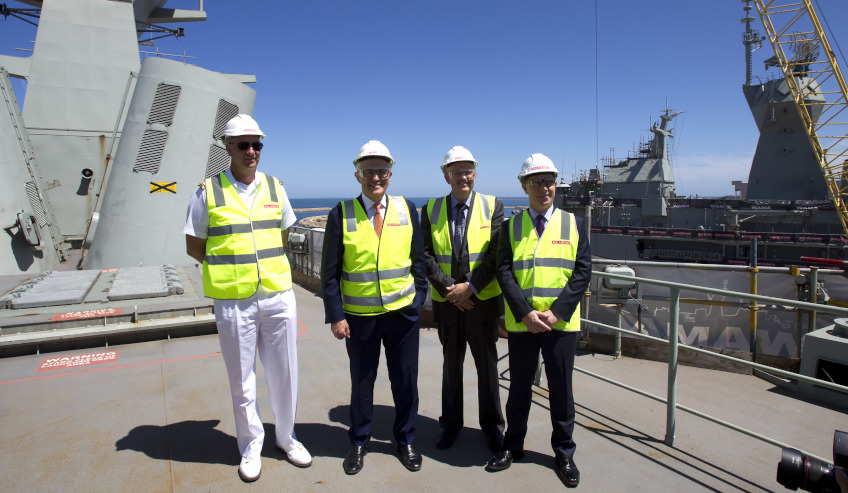Australian warships will be given a $207 million missile defence upgrade in the form of the latest Nulka system to protect Australia against increasing threats from hostile nations like North Korea.
Prime Minister Malcolm Turnbull said the upgrade for the Royal Australian Navy's warships will help sustain jobs in Perth's Henderson shipyards and deliver Australia the most technologically advanced capability.
"Recent events in our region and the complex and growing threat environment we live in means we must stay one step ahead," the PM said.
"Equipping our defence force with the best defensive and offensive technologies will ensure that we can meet and overcome new threats that come our way."
The Nulka rocket-propelled active missile decoy is an Australian designed and developed capability, with American collaboration, devised by BAE Systems Australia and DST Group scientists. It is a rocket-propelled, disposable, offboard, active decoy designed to seduce anti-ship missiles away from their targets.
The upgraded system will be installed in all of the RAN's frigates and Hobart Class air warfare destroyers, and introduced for the first time on the Canberra Class landing helicopter docks (LHDs). HMA Ships Canberra and Adelaide.
BAE Systems Australia chief executive Glynn Phillips said the company's 25 years of experience in anti-ship missile defence ensures the RAN will have a world-leading capability.
"Nulka’s unique capabilities are world leading and ensure that Australia’s navy has the world’s most effective anti-ship missile defence available," Phillips said.
"We have over 25 years of experience in the development, integration, test, operation and support of autonomous systems, from platforms to decoys to guided weapons.
"It’s important that investment in bespoke Australian defence technologies continues to deliver increased capabilities that will benefit the nation."
Nulka is one of Australia's most successful defence exports to date and, Phillips added, "This project will pave the way for continued development of one of Australia’s most successful defence exports."
The $207 million spend will take place over the next 20 years.








